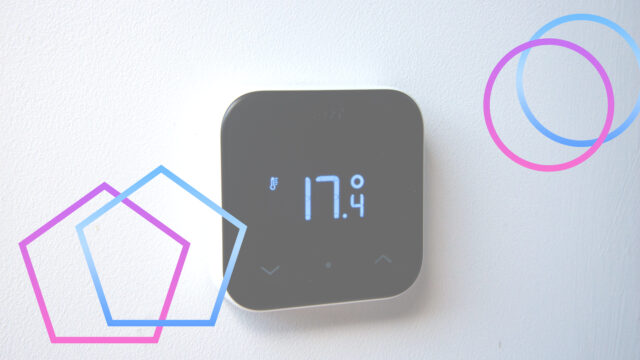As the cold October weather starts to bite and energy prices rise, most of us are pretty nervous about turning the heating on, and are looking for ways to save cash.
Turning the thermostat temperature down is one way of doing this, but even for ‘ideal’ temperatures, you’ll only get the maximum cash saving if you maximise your entire system.
Best temperature for a thermostat
It’s generally accepted that the ideal temperature for a thermostat is between 18°C and 21°C. According to the Energy Saving Trust, turning the thermostat down from 22°C to 21°C will save £90 a year on energy bills for a typical house.
It is good advice. Only heating your home to the point where it’s comfortable, and staves off condensation, damp, and mould, is good financial sense. But, for all the good that this does, heating isn’t just about a thermostat, but the balance of everything.
Look at your boiler temperature
A thermostat turns the boiler off when a set temperature has been reached. However, your boiler may be set to run too hot: the hotter the water temperature, the more gas you have to burn. It’s actually more efficient to run a boiler at lower temperatures, even if it takes longer to warm your house to the right temperature.
I’ve looked at that in more detail in my guide to the best temperature for a condensing boiler.

Move your thermostat
One issue many homes face is that the thermostat is often placed in a hallway, where it’s exposed to cold drafts and isn’t a space where you spend much time. Achieving the right balance for your home can be challenging. If you can, move the thermostat somewhere out of cold drafts, but make sure that it doesn’t have direct sunlight on it, as this can fool the thermostat into thinking it’s warmer than it is.
It’s often easier to move a smart thermostat, as these often come as two components: a boiler control that’s wired into place, and the wireless thermostat that can be more easily placed where you want it.
Improve radiator efficiency
Make sure that your radiators are working properly. Bleed them to get rid of any trapped air, which can cause only part of the radiator to heat up. Also, clean them. Dust blocks airflow, which reduces your home heating efficiently through convection. You can get pipe-cleaner-style brushes that easily push down and behind radiators to remove dust.
Radiators also push heat out the front and back, which can mean that heat is lost to a wall, particularly an external one. Radiator reflector foil is a cheap way of reflecting heat back into the room.
Ideally, radiators shouldn’t have furniture in front of them, but that’s not always practical, particularly in smaller homes.
A radiator fan can help distribute the heat. I used a SpeedComfort fan in my living room, as there’s a small sofa in front of the radiator. This sits at the bottom of the radiator and uses a fan temperature sensor to turn the fan on when the radiator heats up, more evenly distributing heat.


Go smart
A smart thermostat is also a very good upgrade. Easier to control, smart thermostats can be set to work when you want them, too. But, many also have advanced features, such as learning how your home heats up, and then shutting the heat off early, so that residual heat takes you to your desired temperature.
If your boiler and thermostat support it, you can use OpenTherm, where the thermostat controls the boiler’s flow temperature, setting it to the exact level needed to reach your target temperature, increasing efficiency.
With a bigger system, such as Tado X, you pay more, but you have the option of smart thermostatic radiator valves that control each radiator in your home. With this system, you can have different schedules for each room, so you only heat the ones you’re using at any time.


According to Tado, this heating system can save up to 28% on heating bills. Factor this cost in over the lifetime of the system, and smart heating can pay for itself in a matter of years.
Ultimately, there’s no one single solution to cutting energy bills. Your home and heating are a combined ecosystem, and each part needs to be as efficient as possible, from thermostat placement to blocking drafts to your boiler’s flow temperature. It’s important to get the right balance; otherwise, you won’t see the kinds of energy savings you want.











